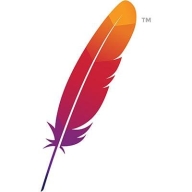

Databricks and Apache Spark Streaming compete in the data analytics and machine learning space. Databricks holds an advantage with its comprehensive cloud integration and built-in optimizations, while Apache Spark Streaming excels in open-source, real-time data processing.
Features: Databricks is favored for its built-in optimization and Delta data format, which enhances performance. It offers seamless integration with Spark and Python, making it ideal for machine learning and big data. Its flexibility in supporting multiple programming languages also makes it attractive. Apache Spark Streaming is notable for its real-time data processing capabilities and low-latency performance. Its versatility and open-source nature with Python support are key highlights.
Room for Improvement: Databricks needs to enhance its visualization capabilities and expand integration options. There is also a need to expand its machine learning features and improve user interfaces for non-technical users. Apache Spark Streaming could improve its memory management and real-time analytics capabilities. Enhancements in event-level integration and interface user-friendliness are needed.
Ease of Deployment and Customer Service: Databricks provides deployment across public and private clouds with robust technical support, although response times could be better. Microsoft support is available as part of enterprise solutions. Apache Spark Streaming is typically deployed in public clouds, where documentation often suffices, but open-source community support varies in availability and responsiveness.
Pricing and ROI: Databricks is seen as expensive, particularly for non-batch applications, but offers significant ROI through scalability and integration. Its comprehensive feature set justifies the cost. Apache Spark Streaming, being open-source, offers a more affordable solution with expenses mainly associated with cloud use and optional commercial support, resulting in higher ROI due to lower initial costs.
| Product | Market Share (%) |
|---|---|
| Databricks | 12.5% |
| Apache Spark Streaming | 3.6% |
| Other | 83.9% |


| Company Size | Count |
|---|---|
| Small Business | 9 |
| Midsize Enterprise | 2 |
| Large Enterprise | 7 |
| Company Size | Count |
|---|---|
| Small Business | 25 |
| Midsize Enterprise | 12 |
| Large Enterprise | 56 |
Spark Streaming makes it easy to build scalable fault-tolerant streaming applications.
Databricks is utilized for advanced analytics, big data processing, machine learning models, ETL operations, data engineering, streaming analytics, and integrating multiple data sources.
Organizations leverage Databricks for predictive analysis, data pipelines, data science, and unifying data architectures. It is also used for consulting projects, financial reporting, and creating APIs. Industries like insurance, retail, manufacturing, and pharmaceuticals use Databricks for data management and analytics due to its user-friendly interface, built-in machine learning libraries, support for multiple programming languages, scalability, and fast processing.
What are the key features of Databricks?
What are the benefits or ROI to look for in Databricks reviews?
Databricks is implemented in insurance for risk analysis and claims processing; in retail for customer analytics and inventory management; in manufacturing for predictive maintenance and supply chain optimization; and in pharmaceuticals for drug discovery and patient data analysis. Users value its scalability, machine learning support, collaboration tools, and Delta Lake performance but seek improvements in visualization, pricing, and integration with BI tools.
We monitor all Streaming Analytics reviews to prevent fraudulent reviews and keep review quality high. We do not post reviews by company employees or direct competitors. We validate each review for authenticity via cross-reference with LinkedIn, and personal follow-up with the reviewer when necessary.